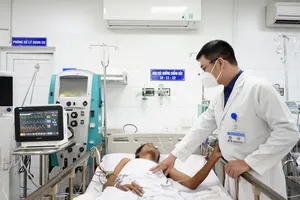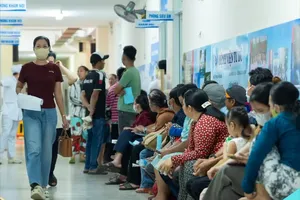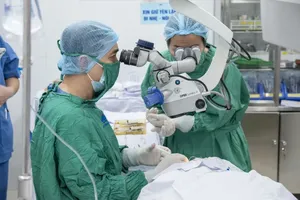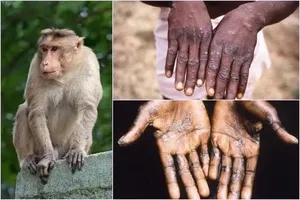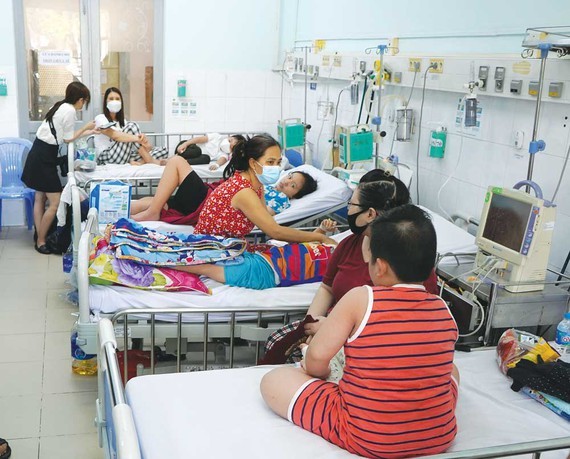
The Children’s Hospital has recently saved the life of a three-year-old living in Long An Province infected with HFM. When coming to the hospital, the child suffered from acute pulmonary edema, respiratory failure due to HFM complications. She was quickly put on a ventilator and given Gamma globulin infusion. Her health is stable now.
Deputy Director of the HCMC Center for Disease Control Le Hong Nga informed that HFM mostly happen among pre-school children owing to insanitary environment and lack of healthy hygiene practices like frequent hand washing. Adding to that is the hot, humid weather – the favorable conditions for this virus to spread. Some easily detected symptoms of this disease are high fever, sore throat, red blister-like lesions on skin and inside mouth.
In the last few days, Children’s Hospital No.1 in HCMC has continuously treated HFM cases. Since the middle of this April, there have always been 9-10 inpatients here due to this disease. Doctor Tran Ngoc Hanh Dan from the Infection-Neurology Department shared that most hospitalized HFM cases are mild and moderate; however, the non-stop increase of this number will obviously lead to severe cases that can cause fatal complications (encephalitis, myocarditis, acute pulmonary edema).
Deputy Director Nga advised that parents of small children need to maintain sanitation at home, while schools should frequently disinfect touchable surfaces. The public should be better aware about disease prevention methods.
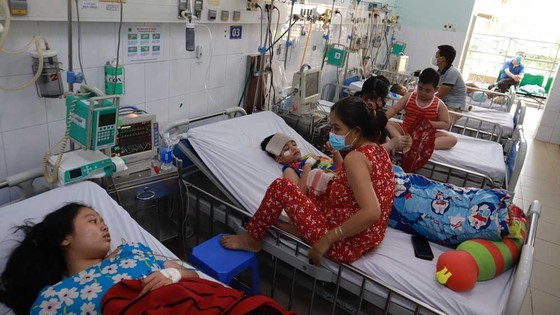
There is an upward trend in the number of DHF inpatients in Hanoi, some of which suffer from severe complications due to late hospitalization. Director of the Center for Tropical Disease (under Bach Mai Hospital) Do Duy Cuong shared that most DHF patients recover within 7 days. Around five percent, however, have dangerous symptoms like bleeding or plasma leakage that can lead to death without timely treatment.
In HCMC, nearly 4,500 DHF cases have been identified so far, including 109 severe cases and 4 deaths due to late hospitalization. Statistics of Children’s Hospital No.1 reveal that in the first 3 months of 2022, the quantity of DHF cases coming for treatment and hospitalization here rose by 2 times compared to this time last year. Last week, HCMC Hospital for Tropical Diseases also treated many DHF cases, including several with severe shock and multi-organ damage.
Head of HCMC Pasteur Institute Assoc. Prof. Dr. Nguyen Vu Trung stated that DHF is an annual disease that peaks from July to the end of next January. It is predicted that in 2022, DHF becomes more complicated, and thus the healthcare sector needs to take immediate action to minimize the number of severe cases, deaths, and large outbreaks.
Director of the HCMC Health Department Tang Chi Thuong said that it is extremely challenging for disease prevention tasks this year as the medical staff is exhausted from the Covid-19 fight last year. The Hospital for Tropical Diseases, Children’s Hospital No.1 and No.2, HCMC Center for Disease Control are all asked to provide proper training for grassroots clinics regarding early detection of DHF for timely treatment.
Any organizations that do not observe disease prevention regulations according to Decree No.117 will be punished. Meanwhile, activities are carried out to raise the public awareness about the dangers of HFM and DHF, suitable methods to stop them. Sufficient medication is prepared for the city to promptly treat patients in need.
In the Southern provinces of An Giang, Binh Duong, Dong Nai, Kien Giang, Soc Trang, thousands of DHF cases have been detected since the beginning of this year. The proportion of severe cases have risen by two times and three times compared to this time last year and the period of 2018-2021, respectively.
To avoid the ‘epidemic within epidemic’ situation, the Health Ministry has asked the health departments of all provinces and cities to cooperate with the local authorities and related agencies to adopt synchronous disease prevention tasks. Local hospitals need to be ready for treatment to minimize deaths.



